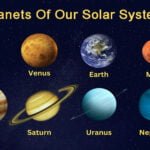
In the quest for sustainable and clean energy sources, fusion power solar emerges as a promising solution. Harnessing the power of the sun through fusion reactions, it offers immense potential to revolutionize the renewable energy landscape. This article explores the intricacies of fusion power solar, its benefits, challenges, and the future it holds for a green energy and more sustainable world.
It refers to the process of generating electricity through fusion reactions using the power of the sun. Fusion, in scientific terms, involves combining two light atomic nuclei to form a heavier nucleus, releasing an enormous amount of energy in the process. This concept aims to replicate this phenomenon on Earth, harnessing the sun’s power in a controlled manner to generate electricity.
This process involves creating conditions similar to the sun’s core to initiate fusion reactions. By heating and compressing hydrogen isotopes, such as deuterium and tritium, to extremely high temperatures, a plasma state is achieved. The plasma is then confined and sustained using powerful magnetic fields, allowing the fusion reactions to occur. As the hydrogen isotopes fuse together, they release energy in the form of heat, which can be converted into electricity.
It offers numerous advantages over other forms of energy generation:
While fusion power solar holds great promise, there are several challenges to overcome before it becomes a viable energy source:
The future is brimming with possibilities. Ongoing research and development efforts, coupled with advancements in technology, are paving the way for significant breakthroughs. Here are some areas where fusion power solar shows great promise:
A1: It offers immense environmental benefits. It produces no greenhouse gas emissions, reduces reliance on fossil fuels, and minimizes radioactive waste generation. With this, we can achieve a cleaner and more sustainable energy future.
A2: The development of fusion power solar is a complex and ongoing process. While significant progress has been made, it is challenging to predict an exact timeline. However, projects like ITER provide hope that it could become a reality within the next few decades.
A3: Yes, it holds great potential for space exploration. Compact fusion reactors could provide a compact and efficient energy source for long-duration space missions, enabling us to explore distant destinations in our solar system and beyond.
A4: Yes, it considered to be safe. Unlike nuclear fission reactors, fusion reactions carry a lower risk of accidents or meltdowns. The fusion process itself is inherently safe, reducing concerns associated with nuclear energy.
A5: It has the potential to complement other forms of renewable energy, rather than replace them. It offers a continuous and reliable power generation capability, which can be integrated with intermittent renewable sources like solar and wind to ensure a stable energy supply.
A6: High initial capital cost is one of the main economic challenge. Building fusion power plants requires significant investments. However, advancements in technology, materials, and construction techniques, coupled with potential government support, can help drive down costs and make fusion power economically viable.
Fusion power solar represents a revolutionary leap in renewable energy technology. With its abundant fuel supply, clean and sustainable nature, and high energy output, it holds immense promise for a greener and more sustainable future. While challenges remain, ongoing research and development efforts bring us closer to realizing the dream of harnessing the power of fusion on Earth. As we continue to explore the frontiers of science and engineering, it offers a beacon of hope for a world powered by clean and limitless energy.
Recommended other topics: Teleportation Circle










© InfoDoot. All Rights Reserved.